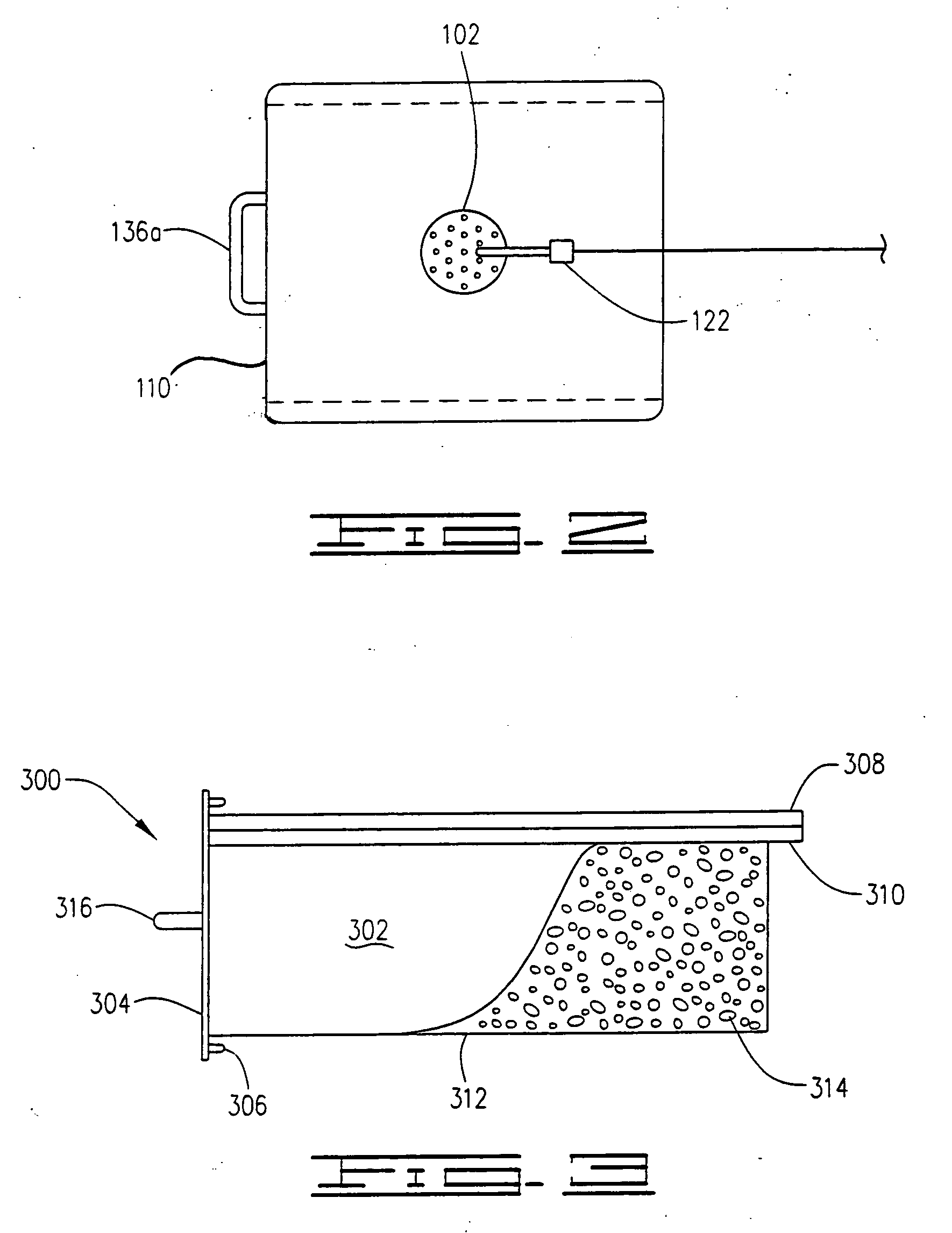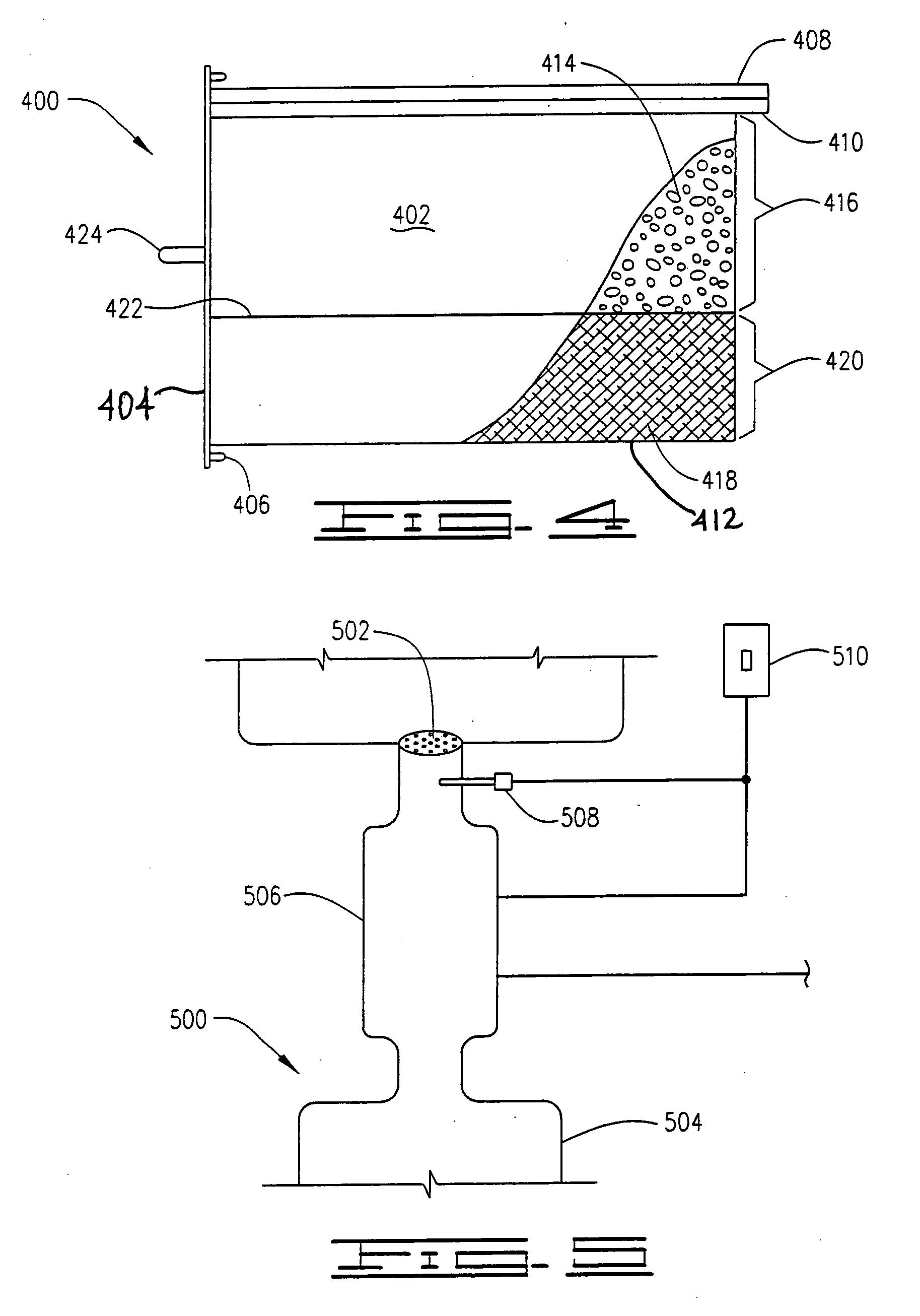Apparatus for target compound treatment
a technology of target compound and apparatus, applied in the direction of lighting and heating apparatus, water/sewage treatment by oxidation, water treatment water, etc., can solve the problems of pollution, contaminated waste water, and important contamination of waste water, so as to improve the appreciation of the contribution of ar
- Summary
- Abstract
- Description
- Claims
- Application Information
AI Technical Summary
Benefits of technology
Problems solved by technology
Method used
Image
Examples
Embodiment Construction
[0039]A target compound treatment apparatus 100 is shown schematically in FIG. 1. The apparatus 100 has an inlet 102, which is shown with an optional pre-filter / coarse screen. The apparatus 100 also has a body 106 terminating in an outlet 104. FIG. 1 shows the apparatus 100 having a square cross section. However, the exact cross section of the apparatus is not important: it could be round, oval, or any other cross section that is desired. Similarly, it is expected that the apparatus 100 may have a similar size to an under-sink garbage disposal. The size of the apparatus is not crucial to its novel function, but rather will be dictated by the space available and the desired life of the destruction and filtration zones. The smaller the size, the more frequently the various modules will have to be changed.
[0040]Within the body 106 are a destruction zone 108, shown as being contained within a first module 110, and a filtration zone 112, shown contained within a second module 114. Embodi...
PUM
 Login to View More
Login to View More Abstract
Description
Claims
Application Information
 Login to View More
Login to View More - R&D
- Intellectual Property
- Life Sciences
- Materials
- Tech Scout
- Unparalleled Data Quality
- Higher Quality Content
- 60% Fewer Hallucinations
Browse by: Latest US Patents, China's latest patents, Technical Efficacy Thesaurus, Application Domain, Technology Topic, Popular Technical Reports.
© 2025 PatSnap. All rights reserved.Legal|Privacy policy|Modern Slavery Act Transparency Statement|Sitemap|About US| Contact US: help@patsnap.com



